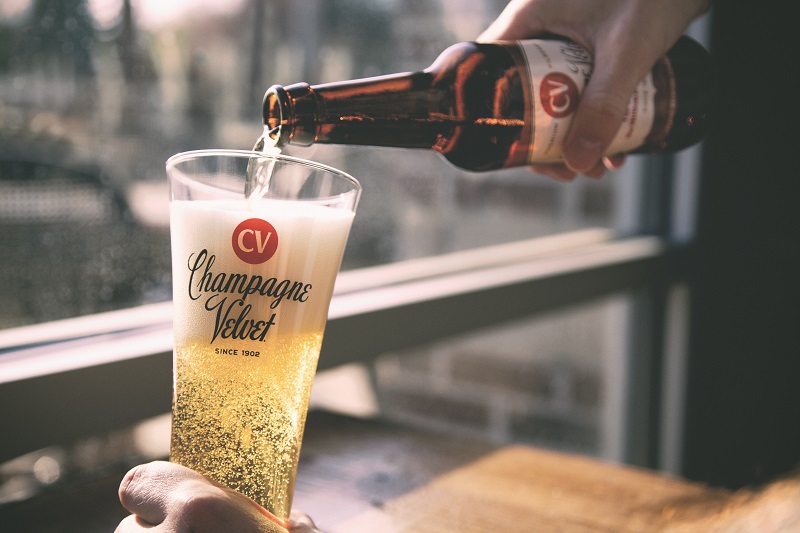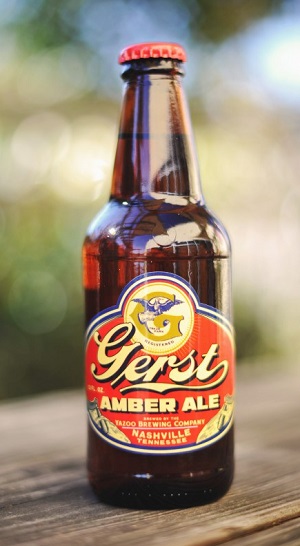Classic Beers Find Second Life with Modern Audiences

(Photo courtesy Upland Brewing Co.)
In 2015, there were about 11,300 packaged beer brands scattered across stores in all 50 states, according to market research company IRI. That’s 32 different beers for every day of the year.
But at a time when those numbers continue to creep up and breweries look forward to new tastes and trends, some are glancing back, reviving brands long forgotten and discontinued, breathing new life into products that disappeared decades ago. What’s old is new again.
“Right now the diversity of drinkers and options has never been more plentiful, but people always want to figure out how we got here,” says Neil McCormick, sales and marketing manager at Yazoo Brewing Co., in Nashville, Tennessee, which resurrected Gerst Amber Ale in 2011 after the brand had a nearly 58-year absence. “This kind of thing gives everyone an opportunity to connect with beers they heard their father or grandfather talk about.”

(Photo courtesy Yazoo Brewing Co.)
However, don’t take these beers as gimmicks. Yazoo brewed about 6,000 barrels of Gerst in 2015, making the beer the third-best-selling brand in its lineup, behind its pale ale and Mexican-style amber. McCormick attributes its success to a strong local connection. Gerst was made in Nashville from 1893 to 1954, excluding the years of Prohibition.
Across the country, other businesses are following suit. Three years ago, Indiana’s Upland Brewing Co. revived Champagne Velvet, an American pilsner first brewed in 1902. In March, it became a year-round brand and is projected to account for 3,000 barrels of production in 2016. In Chicago, Rob Sama was able to track down the original recipe and yeast strain for the city’s iconic Baderbräu pilsner, and it will act as one of Sama’s core beers when Baderbräu Brewing Co., opens this year.
“There’s the occasional tendency in the modern craft beer movement to think we invented local beer, and that is simply not the case,” says Doug Dayhoff, president of Upland. “There were thousands of great local breweries in the U.S. long before us, and this is sort of a way to pay homage to that and the stories that come from it.”
For Shannon Hawkes Degnan, an effort to bring back New York City’s Piels Beer is much more personal. After about two years of effort, he’s hoping to rerelease in 2016 the lager first brewed in the late 19th century. Piels was formerly run by his grandfather, Thomas P. Hawkes, who started at the company as a salesman in 1941 and became its president in 1963.
“We want to bring it back for our family legacy,” says Degnan, who plans to contract brew about 1,000 barrels of Piels for New York City distribution. “It’s true to the beer’s heritage, true to the region and true to our history, which is priceless.”
The increased attention to creating new releases from old brands is rooted in a growing interest in locally made products and local history, notes Dan McHugh, chief marketing officer at Pabst Brewing Co. In recent years, Pabst has focused heavily on heritage brands, energizing Lone Star in Texas, increasing sales of Rainier in Washington State and even bringing back Ballantine India Pale Ale, first brewed in 1878.
“These are brands that generations grew up with, so when you try to grab onto something relevant, people feel like they have ownership in a brand,” McHugh says. “It’s about tying into what a lot of these communities once celebrated and their local history.”

There is a distributor down the road where I can buy Ballantine, Schlitz’s and Shaffer Beers!
FWIW, Gerst may have stopped its own production for 58 years, but it was still a going brand right through the 1990s. It was THE “local beer” in Nashville during that time, even though it was being brewed in… Indiana, maybe?
Whatever happened to the Old German beer brand?
In Portland OR it is a fixture in almost every restaurant’s canned beer selection.
I can still find it outside of Philly. From what I knew, it was brewed by Pittsburgh Brewing.
Piels all day http://www.pielsbeer.com